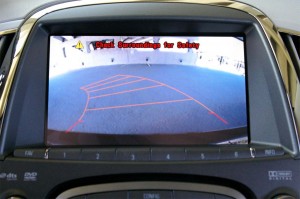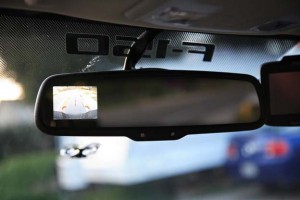Hoping to reduce inadvertent accidents when motorists back up – in particular, when driver can’t see children standing behind their vehicles, federal regulators are proposing new rear visibility standards that – for all intents – would likely require the use of back-up cameras in most or all cars by 2014.
As many as 300 people are killed each year, and 18,000 injured, in what are known as “backovers,” when a driver can’t see what’s behind a vehicle. Nearly half those deaths involve children under the age of 5 who may simply be too small to be spotted by even the most vigilant driver.
“There is no more tragic accident than for a parent or caregiver to back out of a garage or driveway and kill or injure an undetected child playing behind the vehicle,” said U.S. Department of Transportation Secretary Ray LaHood.
The proposed legislation is being named after Cameron Gulbranson, who was killed when his father failed to spot the 2-year-old boy while backing out of the family driveway.
That is far from uncommon, the Kansas-based safety group, Kids and Cars, reporting that 70% of such accidents involve a child and a parent or another family member.
Back-up cameras are the most likely solution to the problem, as there is a limit to how much visibility can otherwise be improved, safety experts stress. The technology was already used in about 20% of the cars sold so far this year.
Though Secretary LaHood has often been a skeptic of some in-car technologies, he is clearly supportive of the use of back-up cameras, whose images can be projected on monitors in the dashboard or, in some cases, in special rearview mirrors that have small LCD displays hidden behind their reflective glass.
Such systems, said LaHood, “help drivers see into those blind zones directly behind vehicles to make sure it is safe to back up.”
The proposal is expected to be finalized next year, and if enacted, the new measure would steadily ramp up the use of the technology – or some effective alternative – between the 2012 model-year and 2014, when it would become mandatory on all vehicles weighing less than 10,000 pounds.
There will almost certainly be an added cost to the use of the technology, though how much will likely vary substantially. Hooking up a camera in a vehicle already equipped with a screen-based navigation display would be relatively simple and affordable, but makers could also opt for in-mirror systems rather than adding large video displays in all future vehicles.


